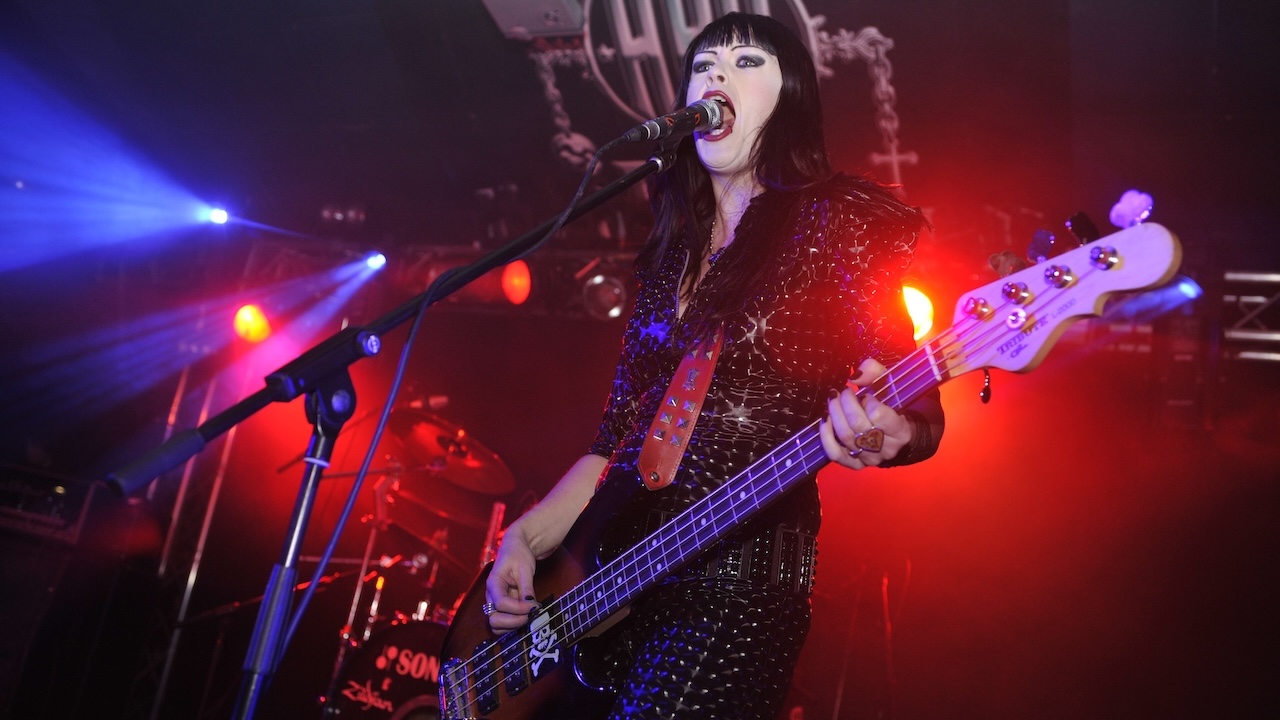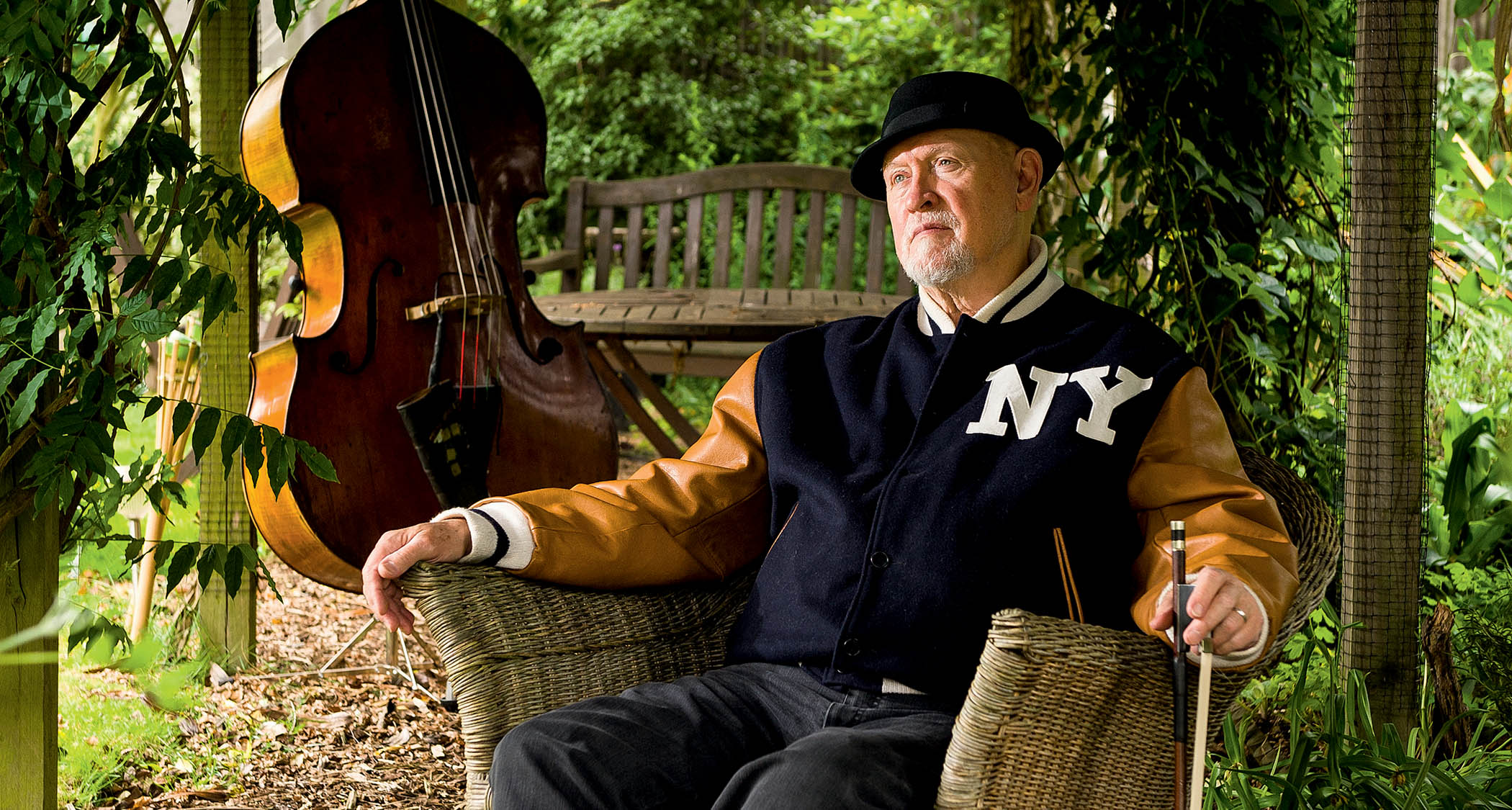“There was a blue arc of electricity, and I was shot back off the mic – that encouraged me to get a wireless system!” There are some rock ’n’ roll stories that you couldn’t make up. One is how ‘Grog’ Lisee was electrocuted by an unearthed microphone
If you’ve heard Die So Fluid’s music you’ll appreciate that running around the stage is a necessary part of the formula

Sometimes it’s not easy being a musician. You step up to a mic and… boom… suddenly you’re very close to not being alive anymore. As Die So Fluid frontwoman ‘Grog’ Lisee told Bass Player back in 2012: “I got electrocuted onstage. It was really bad: there was a huge blue arc of electricity, and I was shot back off the mic.
“We had to stop the gig because no-one could play. I was really lucky: it just hurt my lip where it had touched the mic – so that really encouraged me to get a wireless system for my bass guitar!”
Simple human error was behind the incident (“The DJ had unearthed the wires onstage and just put them into a pile, and no-one knew which wire it was – so the whole stage was live”), but every cloud has a silver (or should it be copper in this case?) lining. “As it happens, the wireless system enables me to run around the stage, so it gave me a whole new lease of life.”
If you’ve heard Die So Fluid’s music – a searing mixture of melodic rock and modern metal – you’ll appreciate that running around the stage is a necessary part of the formula. Grog’s powerful, down-picked bass style and upfront vocals anchor the songs with enormous energy, propelled by her trusted G&L basses.
“I take two G&Ls on the road with me. I get a bit confused by people who take lots of different guitars on the road, because to me the point is that if one breaks down I have the same thing to pick up. It’s pretty hardcore, what we do, and my bass takes quite a bashing.
“I hit the strings pretty hard… You can tell by the scars on my fingers. I’ve been known to break a bottom string – we mostly play in drop C. It’s just the adrenaline, though. I don’t think my playing suffers because of it.”
Grog’s sound with Die So Fluid is a tried-and-tested crunch, although it has undergone some minor tweaks. “I’m endorsed by Hughes & Kettner, and it’s quite hard to control the distortion on those. I use a SansAmp for distortion, so having that extra facility is a bit more than I need.
All the latest guitar news, interviews, lessons, reviews, deals and more, direct to your inbox!
“I also use a programmable Bass Driver to give myself more options with my distortion. I was going from one extreme to another when my clean sound didn’t have enough meat to it, but I’ve got to a midpoint where I’m happy.”
Asked how she comes up with her basslines, Grog revealed both an unusual talent and a healthy disrespect for bedroom perfectionists. “When I write songs I have the whole tune in my head before I actually play it, so if something difficult comes up, then I’ll just learn how to do it! I try and play whatever feels good.”
“Having the whole song in my head as I’m playing the bass is probably something to do with the fact that I sing as well as play. Sometimes a bass part comes from the lyrics, or sometimes a riff sparks off an idea.
“If a song needs a complex bass part, I play one – but this is not that kind of music where the bassline is all over the place. Also, the bass part is a lead line in itself, so I don’t need to go all over the place. But you never know…maybe on the next album I’ll surprise you!”
Joel McIver was the Editor of Bass Player magazine from 2018 to 2022, having spent six years before that editing Bass Guitar magazine. A journalist with 25 years' experience in the music field, he's also the author of 35 books, a couple of bestsellers among them. He regularly appears on podcasts, radio and TV.
You must confirm your public display name before commenting
Please logout and then login again, you will then be prompted to enter your display name.


